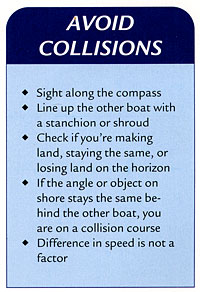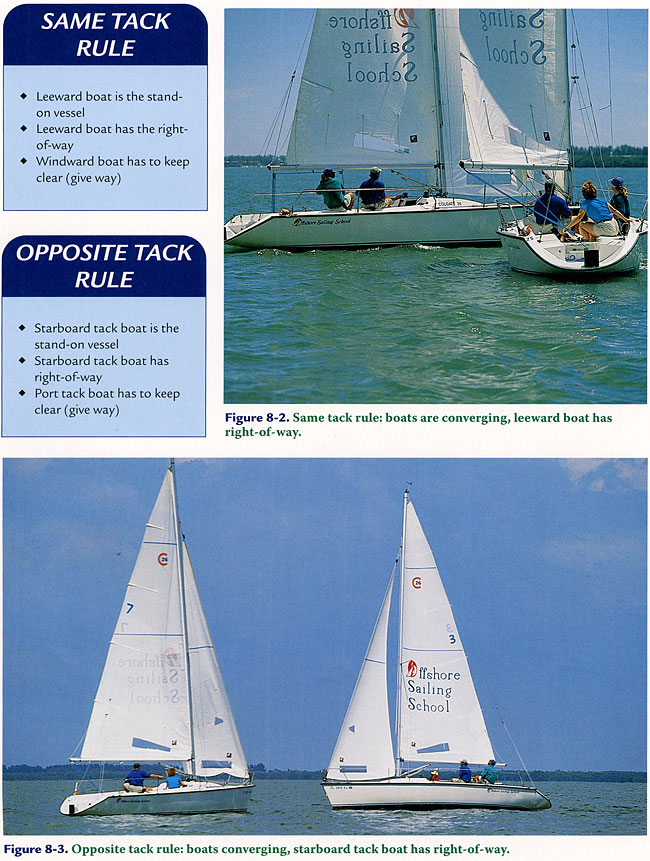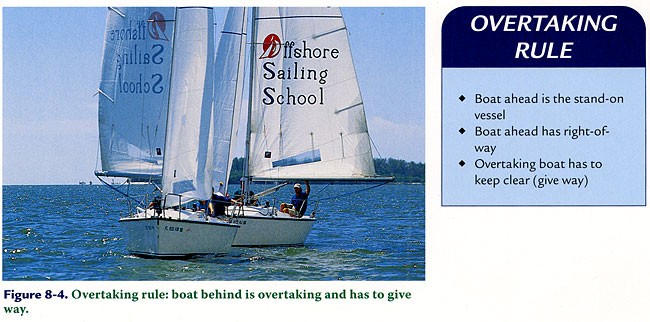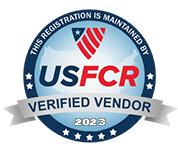Sailing Rules of the Road
When Sailboat Meets Sailboat
There are only three basic possibilities, and three basic boating rules of the road to follow, when your sailboat approaches another sailboat.
Rule 1: When you are on the same tack as the other boat, the leeward boat has the right-of-way. 
Rule 2: When you are on opposite tacks, the starboard tack boat has the right-of-way.
Rule 3: If you are overtaking the other boat, or it is overtaking you, the boat ahead (the overtaken boat) has the right-of-way.
 In Figure 8-2, two boats are approaching each other and subject to the same tack rule. Sailors refer to the boat with right-of-way as the stand-on vessel-the boat that must hold its course. The leeward boat has right-of-way, and the windward boat has to keep clear, or give way. Which boat is the leeward boat? If you said the boat on the left, you were correct.
In Figure 8-2, two boats are approaching each other and subject to the same tack rule. Sailors refer to the boat with right-of-way as the stand-on vessel-the boat that must hold its course. The leeward boat has right-of-way, and the windward boat has to keep clear, or give way. Which boat is the leeward boat? If you said the boat on the left, you were correct.
Figure 8-3 shows the opposite tack rule. The starboard tack boat is the stand-on vessel and has the boating right-of-way. The port tack boat has to keep clear or give way. Which boat is on port tack? If you said the boat on the right, you are correct.
Figure 8-4 shows two boats involved in the overtaking rule. In this case the boat ahead is the stand-on vessel and has the boating right-of-way. The overtaking boat has to keep clear or give way. Which boat is overtaking and what tack is that boat on? If you said the boat behind is overtaking and is on starboard tack, you are correct.
Note that these boats are sailing downwind, with the wind pushing from behind, and they are on opposite tacks. In the overtaking rule, the difference in tacks is not relevant, unless you are racing. Over many years, a complete set of sailing rules of the road specifically for sailboat racing has been developed and administered by the International Sailing Federation (ISAF), but these are not relevant to recreational sailing. If you’re looking to become a pro sailor, check out our Offshore Sailing Certification Courses.



